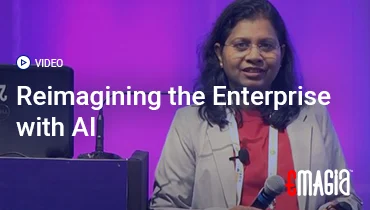Introduction: Why It Matters Now
In today’s rapidly evolving financial landscape, banks are facing unprecedented challenges. From increasingly complex regulations to ever-evolving fraud tactics, risk and compliance management has become more critical than ever. Generative AI is emerging as a powerful tool to enhance and automate these functions, making processes faster, smarter, and more resilient.
The Promise of Generative AI for Risk and Compliance
Generative AI, powered by large language models (LLMs), can revolutionize how banks approach risk and compliance. By automating document analysis, pattern recognition, and decision support, it enables institutions to manage risk with greater accuracy and efficiency.
Core Use Cases of Generative AI in Banking Risk & Compliance
1. Fraud & Financial Crime Detection
Generative AI can identify unusual transaction patterns, monitor behavioral anomalies, and support real-time fraud detection systems.
2. AML & KYC Automation
Automating Know Your Customer (KYC) processes and Anti-Money Laundering (AML) checks using GenAI reduces manual errors and enhances efficiency.
3. Regulatory Compliance Reporting
Generative AI assists in interpreting regulations, generating compliance reports, and ensuring up-to-date adherence to regulatory requirements.
4. Credit Risk Assessment
AI models can analyze unstructured data such as financial news, customer documents, and past transaction history to improve credit decision-making.
5. Model Risk Governance
Generative AI supports documentation, audit trails, and model validation efforts, ensuring transparency and compliance with internal model governance policies.
6. Cybersecurity Enhancement
By simulating attack scenarios and analyzing logs, GenAI helps improve cybersecurity readiness and reduce response times during incidents.
7. Climate and Operational Risk Management
It synthesizes environmental data and reports to help institutions assess climate risk exposure and operational vulnerabilities.
Building a GenAI-Powered Operating Model
To fully leverage Generative AI, banks need to build the right data infrastructure, integrate AI into risk frameworks, and establish clear governance policies that ensure responsible use.
Addressing New Risks from Generative AI
While GenAI offers many benefits, it also introduces risks such as bias, hallucinations, and data leakage. These must be mitigated through human oversight, testing, and compliance reviews.
Regulatory Trends and Industry Direction
Governments and regulators worldwide are moving quickly to provide AI governance frameworks. Banks adopting GenAI must stay aligned with the evolving legal landscape, including the EU AI Act and guidelines from U.S. and UK regulators.
Case Studies of Early Adoption
Leading banks have already started piloting GenAI in areas like transaction monitoring, regulatory reporting, and compliance advisory services, showing measurable improvements in efficiency and accuracy.
10-Step Roadmap to Implement GenAI in Risk & Compliance
- Identify high-impact use cases
- Build cross-functional implementation teams
- Develop data governance strategies
- Choose secure and scalable AI platforms
- Pilot and validate models with strict oversight
- Establish AI ethics and risk guidelines
- Integrate with existing systems and processes
- Train staff and compliance officers
- Deploy monitoring and feedback loops
- Scale gradually with performance metrics
How Emagia’s AI-First Platform Transforms Risk & Compliance
Emagia offers an end-to-end AI-powered platform for finance and compliance. Its solutions like GiaGPT and GiaDocs enable real-time fraud detection, risk document automation, and compliance reporting. Emagia’s models are built with explainability and regulatory audit-readiness at their core, ensuring that banks remain both agile and compliant.
The Future of Generative AI in Banking
As the technology matures, GenAI will become an essential part of risk and compliance strategies. Banks that invest early in robust AI frameworks will benefit from reduced costs, improved accuracy, and competitive advantage in compliance operations.
FAQs
How does generative AI differ from traditional AI in banking?
Generative AI focuses on producing content and insights from data, while traditional AI often relies on structured rule-based systems. GenAI provides more dynamic and flexible solutions for complex tasks like compliance review and fraud detection.
Is generative AI safe for use in compliance?
Yes, when used responsibly with human oversight and embedded controls. It’s essential to implement robust governance, audit trails, and bias checks.
What are some of the limitations of GenAI in banking?
Limitations include potential hallucinations, dependency on quality data, and challenges in interpretability. These can be mitigated with testing and human-in-the-loop strategies.
Can GenAI be used for regulatory submissions?
Yes, GenAI can draft and assist in regulatory documentation, but final submissions must be reviewed and approved by compliance officers.
How long does it take to implement GenAI solutions?
Initial pilots can be implemented in 2–3 months, with full deployment taking 6–12 months depending on complexity and infrastructure readiness.


